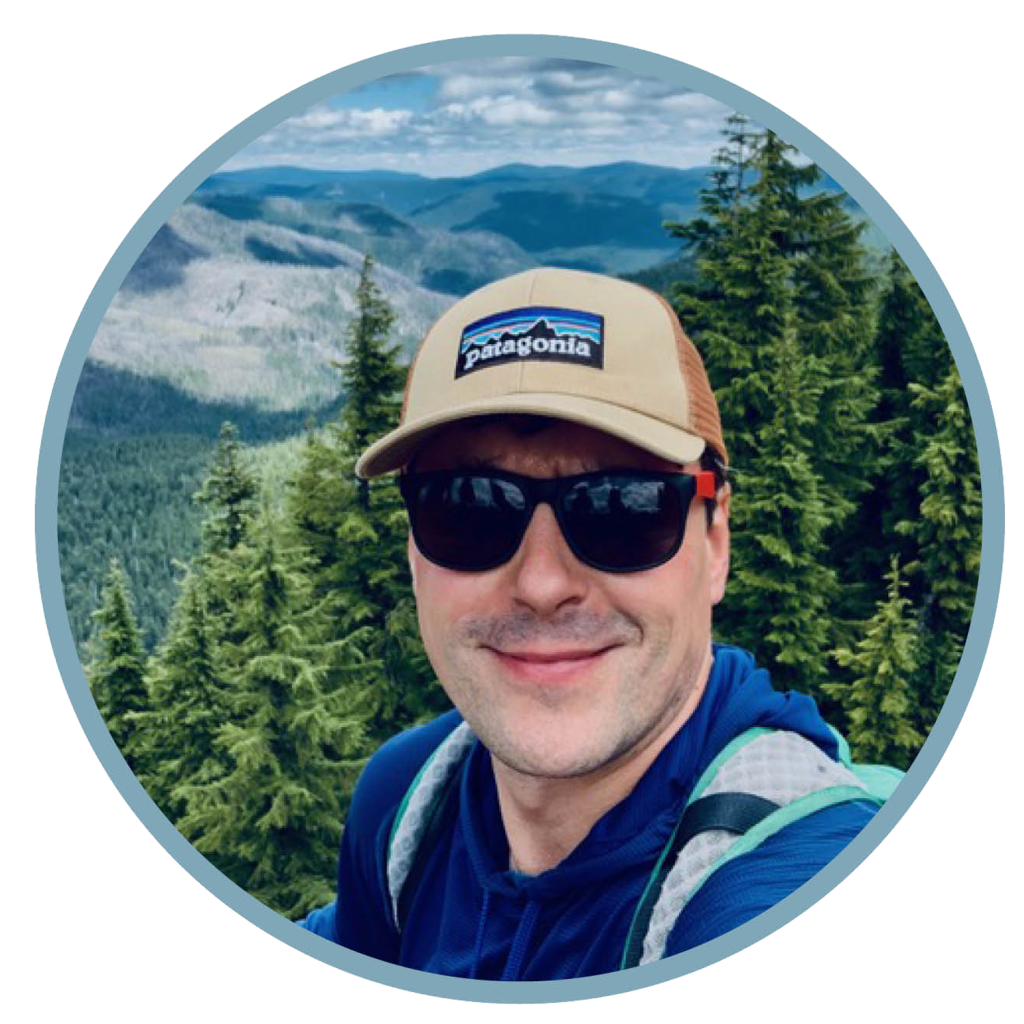Protecting Our Future Means EMPOWERING CASCADE FOREST CONSERVANCY
Not everyone has the resources or expertise needed to study the details of every proposed timber sale, interpret the implications of the latest ecological insights and climate science for local ecosystems, or build coalitions strong enough to stand up to corporations trying to dig an open-pit mine on the doorstep of Mount St. Helens. But, thanks to the support of people like you, Cascade Forest Conservancy does.
James Owen is someone who trusts CFC to work for the places he cares for. James lives next to the Gifford Pinchot National Forest in Randle, WA and owns two nearby businesses, Raintree Nursery and the Packwood Station.

Both of these businesses are located in the greater Cowlitz River watershed, and are surrounded by the Gifford Pinchot National Forest, Mount Rainier National Park, Mount Adams, and Mount St. Helens. Together these businesses form a perfect snapshot of Lewis County. Half agricultural, and half adventure tourism. I believe that these two things together (Agriventuretourism, if you will) is the future of places like this. For people to live happy, healthy, and productive lives in these areas, we must provide economic opportunities outside of resource extraction. Building an economy centered on championing our beautiful landscape is the only way that is both balanced, and sustainable.
James has listed his businesses as supporters of the Green River Valley Alliance, a coalition launched by CFC opposing persistent efforts to mine near the Mount St. Helens National Volcanic Monument. This mine threatens the nearby Green River—which provides critical habitat and is a gene bank for wild steelhead, is under consideration for listing as an Outstanding Resource Water by the Washington Department of Ecology and feeds into sources of drinking water to downstream communities.
For the nursery, water is a critical resource. Any scenario threatening water, to a farmer, is bad. I’m not at risk in Randle, but there are a ton of farmers downstream that are. And there’s a one-in-three chance that people staying at Packwood Station are there for Mount St. Helens. The last thing we would want is to say to customers is, “There’s this huge mine up at the volcano now.”
James first heard of CFC years earlier when he came across our name while researching the history of the property he purchased in Randle.
Silver Creek goes through Randle and into the Cowlitz River and drains a 60 to 80 square mile watershed. It’s a decent little river and my property is the very first parcel of land it goes through after coming out of the National Forest. When I bought this property, I realized, looking back at Forest Service notes, that the forest upstream from us (it’s being thinned right now) was originally proposed to be a huge logging operation, and CFC had worked to get it down to a much more reasonable size. They had worked to get old-growth stands removed from the sale, and things like that. I walk back there almost every day. There is a four-mile trail that has been put in by backcountry horsemen that we use. Without CFC, all of that would be gone now, and instead, it’s there. All the adjacent areas of second growth were over-planted and needed to be thinned, and they are being logged. To me, that’s perfect harmony. There’s no reason they need to cut down the 400-year-old tree when there’s a square mile of overplanting begging to be thinned and sent to the stud mill.
When I first started looking for research on the history of our property, CFC’s name popped up immediately, and I was like, “who are these people? They saved my backyard and I’ve never even met them.”
James finally got to know CFC when he attended meetings hosted by the Pinchot Partners Forest Collaborative, which helps guide forest management decisions by creating dialogue between conservationists, Tribes, loggers, community leaders, and the Forest Service.
I went to the meeting because I was concerned there wouldn’t be someone like CFC there. I felt like I had moved out to this logging area and was mostly met with sentiments that were pro-unregulated logging. Sometimes it’s a lonely fight being an environmentalist, but I was able to be more at ease because I realized very quickly that there was already somebody there that I could trust and who I felt represented me and the people like me who appreciate the forest for what it is and want it to be managed responsibly.
It’s frustrating that for 99% of the people who care about this, they can’t make this their full-time job. Forest conservation is a thing they are able to allocate, if they’re lucky, an hour or two toward a week. And most of that time, you end up just trying to catch up on the news of what’s happening in the industry. Meanwhile, there’s an enormous number of people and lobbyists trying to remove regulations on mining and logging. But to know that I’m not alone and there are people far better at this than I could ever hope to be. Realizing that they’ve done this before, that they’re collaborating, that this is their full-time job—it was a huge relief to see that on my side.
In part, I support CFC because I trust you more than anyone else to manage money in an effective way. I’ve seen so much actual action and implementation taken during the time that I’ve known about your organization and been donating. Really, you make me feel like the money I give CFC is working for me.
Join James in empowering CFC by doubling the impact of your donation today. Investing in CFC is an investment in Forests for the Future that can continue to support local communities, allow native life to flourish, and inspire generations to come.
MORE FOREST FOR THE FUTURE FEATURED STORIES

Our 2022 Science & Restoration intern, Alex Torres, on why even small actions make a major impact for the Cascades

Volunteer and Supporter, Heather Gordon, on why protecting our forests means planting seeds of hope

Pinchot Partners forest collaborative Chair, Pete Krabbe, on why protecting our future means investing in relationships

South Gifford Pinchot Collaborative Coordinator, Josh Petit, on CFC’s work with forest collaboratives

Supporter and volunteer, Kim Freeman, on why protecting our future means protecting wildlife




